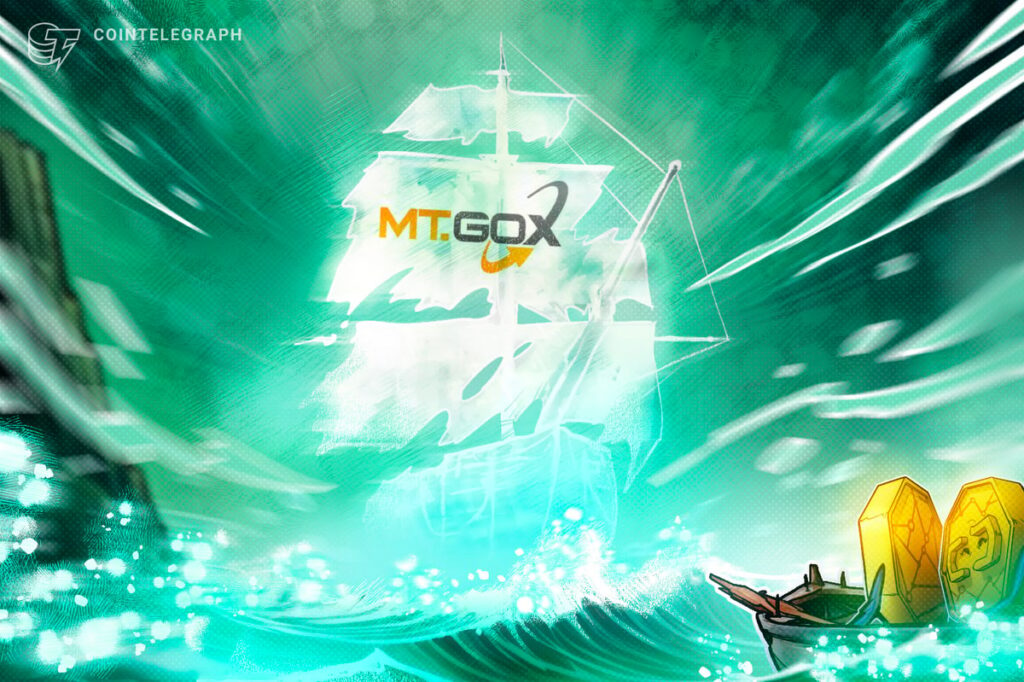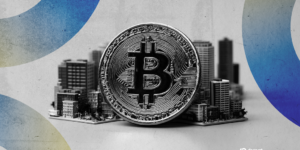The Ghost of MT. Gox Will Stop Haunting Bitcoin This Halloween

Mt. Gox, the defunct Tokyo-based cryptocurrency exchange, still holds around 34,689 Bitcoin (BTC) ahead of its Oct. 31 repayment deadline.
The exchange lost around 650,000 BTC in thefts that went undetected from 2011 until its 2014 collapse, while about 200,000 BTC was later found in an old-format wallet. Those coins became the foundation for creditor repayments overseen by court-appointed trustee Nobuaki Kobayashi.
In 2017 and 2018, Kobayashi earned the nickname “Tokyo Whale” for selling Mt. Gox Bitcoin to fund fiat repayments. In mid-2024, wallet activity surged again as roughly 100,000 BTC was moved between Mt. Gox addresses for distribution, though not all represented actual sales.
The repayment deadline was extended by a year to give creditors more time to complete claim procedures. With about $3.9 billion in Bitcoin still in Mt. Gox-linked wallets, this Halloween may again spark concerns about possible sell pressure.
Here’s how Mt. Gox’s Bitcoin movements have moved markets throughout its bankruptcy and civil rehabilitation proceedings.
Tokyo Whale’s first Mt. Gox Bitcoin sales dump
Kobayashi’s first major round of Bitcoin sales took place between September 2017 and March 2018, with blockchain data indicating that the largest offloading occurred on Feb. 6. By mid-March, Mt. Gox’s Bitcoin holdings had fallen to around 166,000, after Kobayashi disclosed the sale of 35,841 BTC for 38 billion Japanese yen (about $360 million at the time).
That may not seem like a significant supply shock in today’s Bitcoin economy. On Wednesday, Bitcoin had a $2.24-trillion market capitalization, but back in early February 2018, that number stood at roughly $140 billion, when Kobayashi’s sales represented about 0.26% of the asset’s total value.
Related: $19B crypto market crash: Was it leverage, China tariffs or both?
Kobayashi’s Feb. 6 sale also coincided with Bitcoin’s slide to around $6,000, which was the lowest point of that year’s first quarter. Bitcoin was already falling from its December 2017 peak of nearly $20,000 during the height of the initial coin offering (ICO) boom.
While Bitcoin was already struggling after the collapse of the ICO bubble, its sharp drop on Feb. 6 closely coincided with Kobayashi’s major sell-off. Kobayashi denied that his Mt. Gox liquidations deepened the decline, but his actions drew criticism from market observers.
Tokyo Whale stops selling at around 144,000 BTC
Following the ICO crash of early 2018, Bitcoin and the cryptocurrency industry entered what’s now known as the first crypto winter, as liquidity dried up and funding slowed down. Many crypto firms had to downsize or shut down.
Kobayashi didn’t help either by continuing to sell off Mt. Gox’s Bitcoin. About 24,658 BTC was sold from April 27 to May 11, decreasing the exchange’s holdings to 141,686. The first major sale on April 27 was for about 15,000 BTC. Bitcoin had a sharp drop on April 25 to 26 but rebounded on April 27 before having a small rally to Q2 2018’s top of nearly $10,000. The second major sale by Kobayashi on May 11 coincided again with its fall from the top.
This was the last time Kobayashi sold Mt. Gox’s Bitcoin. In June, after a creditor petition, the Tokyo District Court halted the bankruptcy and opened civil rehabilitation, appointing Kobayashi as rehabilitation trustee. In bankruptcy, non-monetary claims are converted to cash. In civil rehabilitation, Bitcoin claims are not liquidated, with repayment set by a court-approved plan that allows for distributions in BTC or Bitcoin Cash (BCH) rather than cash.
Related: Democrats counter US crypto framework; bill grinds to a halt
With Mt. Gox sales off the table, Bitcoin held above $6,000 for most of the year until November’s Bitcoin Cash hard fork rattled the market. Mt. Gox’s holdings remained steady at around 142,000 BTC during this period.
Mt. Gox Bitcoin repayments begin
In mid-2024, Bitcoin was in a far stronger position than during the Tokyo Whale era, still riding the momentum of the first batch of US spot Bitcoin exchange-traded funds. It was the middle of a bull rally that would eventually send Bitcoin past $100,000 in December 2024.
In early July, Mt. Gox wallets began moving Bitcoin as the exchange prepared for creditor repayments under the civil rehabilitation plan. Markets initially feared that recipients would immediately sell. Bitcoin dipped again after Kraken, one of the exchanges handling distributions, announced on July 24 that it had completed its process.
Some analysts speculated that up to 99% of creditors might sell once they received their share. But when repayments actually began, there was “no significant spike” in trading volume, according to CryptoQuant founder Ki Young Ju.
By Aug. 1, Arkham data showed Mt. Gox’s holdings had fallen by nearly 100,000 BTC, leaving around 46,000 BTC still under the trustee’s control.
Mt. Gox’s extended Bitcoin repayment deadline nears
On Oct. 10, 2024, Kobayashi announced that most repayments to verified creditors had been completed, though many were still pending due to incomplete procedures or processing issues.
With court approval, the repayment deadline was extended from Oct. 31, 2024, to Oct. 31, 2025, and the trustee urged remaining creditors to finalize their submissions through the Mt. Gox claims portal.
At the time of writing, Mt. Gox wallets still hold about 34,689 BTC worth roughly $3.9 billion, awaiting distribution.
In March 2025, the exchange began moving assets between its wallets, a likely step in preparing for further repayments ahead of the Halloween deadline.
Magazine: Review: The Devil Takes Bitcoin, a wild history of Mt. Gox and Silk Road















